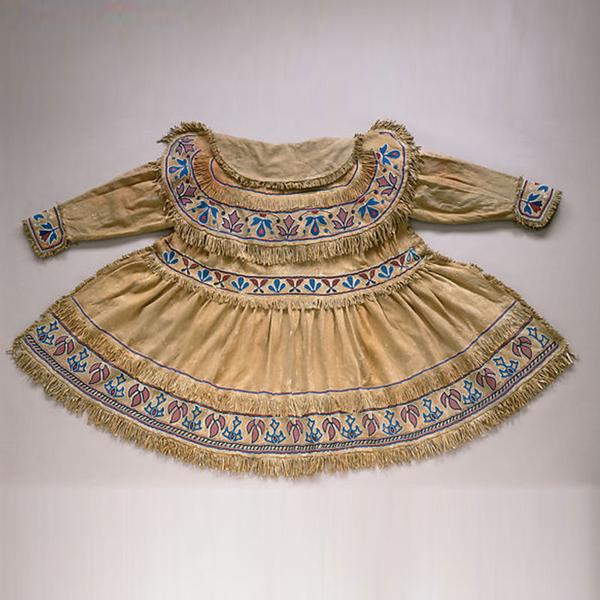Shakhùkwiàn (Man’s Coat)
Artwork Details
- Title: Shakhùkwiàn (Man’s Coat)
- Date: ca. 1840
- Geography: Made in Missouri or Kansas, United States
- Culture: Lenni Lenape/Delaware artist, Native American
- Medium: Hide, cloth, glass beads, cotton tread
- Dimensions: H. 39 × W. 63 in. (99.1 × 160 cm)
- Credit Line: On loan from the Charles and Valerie Diker Collection
- Object Number: L.2021.3.11
- Rights and Reproduction: Image © Charles and Valerie Diker Collection/Photo: Dirk Bakker
- Curatorial Department: The American Wing
Audio

9805: Shakhùkwiàn (Man’s Coat), Lenni Lenape/Delaware Artist
JOE BAKER: For me, encountering this coat is nothing short of inspirational…
TANTOO: That’s Joe Baker of the Lenape Nation.
JOE: I'm inspired by the beauty of the intricacy of the beadwork – the sort of fanciful and imaginary design of the coat itself. And it conjures in me feelings of reminiscence, of story, of experience.
TANTOO: Although the Lenape were displaced to Oklahoma in the 1860s, they originated on the east coast of North America.
JOE: The Metropolitan Museum of Art is located in our ancestral territories. Our territories began at the southern boundary of the Catskill Mountains, and extend south to include the island of Manhattan, all of New Jersey, into Pennsylvania and a portion of Delaware.
TANTOO: The layers of this deerskin coat would have kept the wearer comfortable through the chilly eastern winters. And the dynamic beadwork – lively patterns of alternating blue and red foliage – suggests spiritual health and well-being.
JOE: They're much more than just decorative. They really have meaning and power and voice. They're part of an identity, they are part of a community.
TANTOO: Joe recalls encountering similar garments for the first time as a child at community gatherings and dances in Oklahoma.
JOE: I began to understand and see firsthand the color and pattern and rhythm. All of that color was animated and moving on the dance path. And that, to me, became very exciting. How the beadwork itself would find a voice and find an expression in the movement of the person wearing it. And they come to life through these relationships.